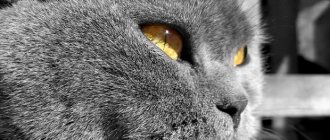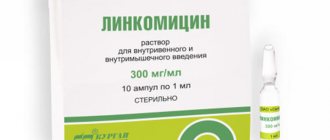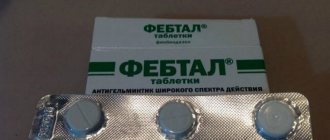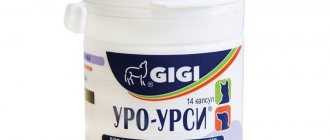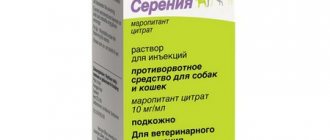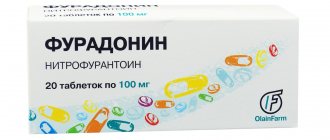Composition and action
The complex drug contains several medicinal components:
- Berberis - dried roots of barberry, in homeopathy they are included in the composition of drugs prescribed for renal and hepatic colic, for acute sudden pain in the liver, bladder and other organs of the urinary system, for pain in the lateral abdomen and kidneys;
- Cantharis (Spanish fly) - is included in the homeopathic preparation to relieve inflammatory processes in the organs of the urinary system. Used in urology for inflammatory diseases of the urethra and bladder, severe inflammation;
- Hepar sulfuris (hepar sulfur) - used to eliminate chronic foci of infection that are resistant to antibiotic therapy;
- Cuprum arsenicosum – copper arsenite, has an antispasmodic effect, helps eliminate colic.
Cantaren has antispasmodic, anti-inflammatory, diuretic effects, activates regenerative processes in the kidneys and urinary tract.
Important!
Cantaren is produced in two dosage forms - tablets and solution for injection. Injections are used more often in the treatment of urological diseases - they provide rapid action and maximum therapeutic effect.
Description of the drug
Cantaren is a combined homeopathic remedy prescribed as an adjuvant therapy in the treatment and prevention of urolithiasis. Available in tablets of 50 pieces in a jar, in the form of a solution of 10 or 100 ml, and in ampoules for injection of 2 and 5 ml. Despite its effectiveness, it is absolutely harmless to animals, therefore it is widely used for the prevention of diseases of the genitourinary system. Cantarene is often used in traditional medicine.
Also read: Vitafel for cats: instructions for use
It contains common barberry, arsenic copper, cantharidin and sulfur liver. Among the auxiliary elements are sodium chlorine and liquid for injection. The capsules contain calcium sterate.
To understand what a product is, you need to study the properties of its elements. Thus, barberry is capable of eliminating inflammatory processes and irritations with its chemical composition. Berberine, which is part of it, improves the trophism of the tissues of the kidneys and ureters, has antibacterial and anti-inflammatory properties. It also normalizes the rate of excretion of uric acid by liver tissue.
Interestingly, many doctors consider the medicine so necessary that they included it in the list of must-haves in a home veterinary medicine cabinet.
Arsenic copper relieves spasms, relaxes and soothes muscles. In addition, it is able to destroy pathogenic bacteria, normalizing the microflora of the genitourinary system. From the very beginning of the course of therapeutic measures, discomfort when urinating goes away.
Cantharidin, contained in ash spank, eliminates pain, spasms, and also promotes the rapid and painless administration of salt crystals from the kidneys. Such functions of the active substance help improve the functioning of the body’s “filters”. Additionally, since cantharidin is an inhibitor of myosin phosphorylation, it helps relax muscle tissue and calm your pet.
Also read: Symptoms and treatment of distemper in cats
Sulfur liver, due to its high calcium polysulfide content, is effective against staphylococci, streptococci and other bacteria. It promotes the regeneration of epithelium and skin when applied locally, and accelerates the restoration of the lining of internal organs.
The main therapeutic functions of the drug:
- regenerative;
- antispasmodic;
- anti-inflammatory;
- antibacterial;
- diuretic;
- diuretic;
- painkiller.
Therefore, the product actively restores kidney function, removes salt crystals, normalizes blood circulation in the pelvic organs, has a positive effect on the functioning of the liver, gastrointestinal tract and activates the immune system. It, among other things, contains beneficial alkaloids, tannins and extracts of medicinal herbs.
Purpose
Cantaren is used to treat acute and chronic diseases of the urinary organs in cats. Indications for use are:
- cystitis;
- nephritis;
- pyelonephritis;
- urethritis;
- glorumelonephritis;
- nephrosis.
Cystitis is a common inflammatory disease of the bladder, which can be caused by stagnation of urine or the presence of infection, usually pathogenic bacteria, but sometimes the inflammatory process is provoked by fungi or viruses. Bacterial cystitis is caused by staphylococci, streptococci, Proteus, Enterobacteriaceae, Escherichia and other pathogenic microorganisms. The reasons for the penetration of bacteria into the urinary system can be:
- stagnation of urine;
- damage to the mucous membranes of the bladder or urinary canals, including those caused by urolithiasis (urolithiasis);
- injuries;
- tumors;
- stress.
With cystitis, a cat experiences frequent and painful urination: the cat meows, sits down not only in the tray, but also in other unsuitable places, the presence of blood in the urine (you may notice a change in the color of the urine - from pink to deep red, or blood clots). After each urination (or attempt), the cat actively licks itself, which also indicates the presence of pain.
Cystitis can be acute or chronic. The latter may have no visible symptoms. During an ultrasound examination, thickening of the walls of the bladder can be observed, due to which it does not empty completely. In stagnant urine, pathogenic bacteria actively develop, which cause an exacerbation of the pathology. Periodic inflammatory processes reduce the cat's immunity.
The consequence of chronic cystitis can be the development of renal pathologies. Pyelonephritis is an inflammation of the renal pelvis that develops under the influence of pathogenic bacteria. The pathology can threaten the life of the animal: without treatment, kidney failure develops: toxic substances are not bound and removed from the body, which can lead to death.
According to the degree of development, pyelonephritis can be primary, when it develops directly in the kidneys, and secondary, when the disease becomes a consequence of infection of other organs of the urinary system. Acute inflammation of the renal pelvis can be suspected when the cat is febrile, lethargic, or lacks a response to various stimuli. The pet feels pain in the abdomen and kidneys (does not allow him to touch the body), the amount of urine produced decreases, it acquires an unpleasant odor, and blood and purulent discharge may be observed.
There are catarrhal, hemorrhagic and purulent pyelonephritis. The latter is the most dangerous because it can cause uremia - acute poisoning of the body with poisons formed during the breakdown of proteins: ammonia, urea, cyanate, acetone, etc. Signs of advanced pathology are:
- refusal of food;
- smell of ammonia from the mouth;
- apathy;
- increased thirst;
- decreased body temperature (below 37 degrees);
- convulsions and others.
Without treatment, the disease leads to uremic coma and death of the animal. Therefore, it is important to contact a veterinarian at the first sign of kidney disease.
Urethritis is an inflammatory disease affecting the urethra. The reasons may be improper feeding, which leads to urolithiasis and, as a result, urethritis, damage to the urethra. If a pet cannot go to the litter box, urine stagnates and toxins accumulate in the body, which lead to intoxication and death.
Important!
The main cause of urolithiasis - urolithiasis, which without treatment can cause premature death of the animal - is improper feeding.
Cheap food and human food containing salt can cause urolithiasis, a chronic disease in which salt deposits, sand, and stones form in the bladder. Veterinarians consider other reasons to be viral and infectious diseases, a sedentary lifestyle, genetic predisposition, and stress. The pathology is accompanied by painful urination, frequent urge to urinate, and the presence of blood in the urine. In severe cases, the urethra may become blocked by stones.
Precautionary measures
When working with Cantaren, you should follow personal hygiene rules.
Safety precautions are also important :
- After work, wash your hands with soap.
- Give medicine to cats only with gloves. In case of accidental contact of the product with skin or mucous membranes, rinse the affected areas with plenty of water.
- Treatment with Cantaren should not be combined with other medications unless prescribed by a doctor.
- People with hypersensitivity to the components of the composition should not be allowed to come into direct contact with the drug.
- If a person develops an allergy or accidentally ingests the product, you should immediately consult a doctor.
- Empty bottles are disposed of as household waste.
There are people who consider any homeopathic remedy to be a “dummy”. They do not believe in the effectiveness of such drugs and call them placebos
But there are also cat owners who are careful when choosing medications. “Chemistry” scares them, and the only correct solution seems to be the selection of a homeopathic remedy
One such medicine for animals is Cantaren.
Dosage
For cats, it is more convenient to use an injection solution. Injections can be given intramuscularly or subcutaneously. Kittens and adult cats are given 0.2-2 ml of Cantaren solution 1-3 times a day. For acute inflammations, the course of treatment is 7-10 days, for the treatment of chronic pathologies - 1 injection per day for 3-4 weeks.
Injections are placed under the skin in the withers area. You need to pull back the fold, carefully pierce the skin, inserting the syringe needle at an angle of 45 degrees, then slowly inject the medicine.
Intramuscular injections are made into the thigh area. It is better to choose syringes with thin needles, insert the needle approximately 1-1.5 cm and quickly inject the medicine.
Important!
If the doctor has prescribed a course of injections, they should be done at the same time, this improves the therapeutic effect.
Main advantages
- Gentle but effective effect on the body
- Good proven manufacturer
- Cantaren should not be given to cats during the first two weeks of pregnancy;
- It is also not recommended to give the drug to kittens under six months of age.
Side effects
Cantarene in tablets and injection solution is in great demand among pet cat owners and veterinarians. The reason is that the drug has many positive aspects:
- Affordable price, can be purchased at any veterinary pharmacy and in the required quantity for full therapy or prevention.
- High performance with a positive effect. Reviews from pet owners show that a noticeable improvement and elimination of acute inflammation is observed within a few days after the start of treatment.
- Easy to use, because the tablets offered for animals have a pleasant taste and aroma. This factor facilitates the procedure of admission and treatment in general.
- The injection solution does not cause pain when administered, and accordingly the pet behaves calmly during the procedure and does not break out.
- Side effects are minimal, occurring only in case of individual intolerance. From this it follows that the homeopathic remedy can be administered or fed to kittens with a still fragile immune system.
- Parallel administration of multivitamin complexes is allowed, which will only speed up the treatment of pathology.
We invite you to read: Camel – description, types, photos, where it lives, what it eats


